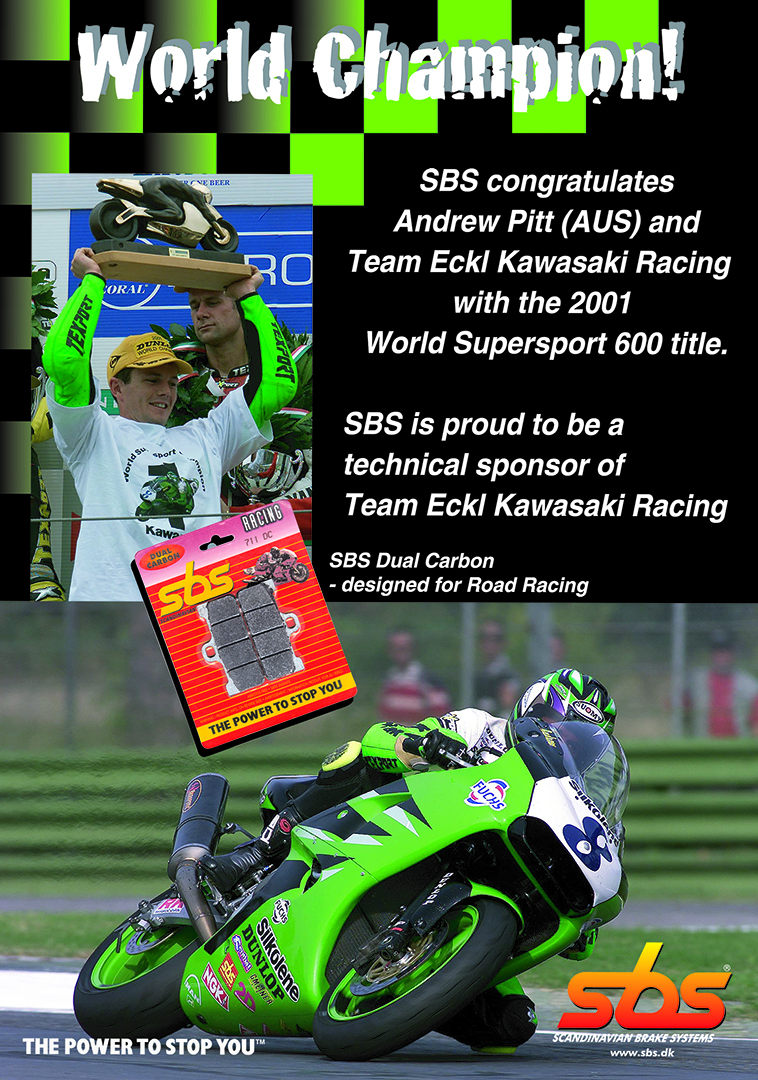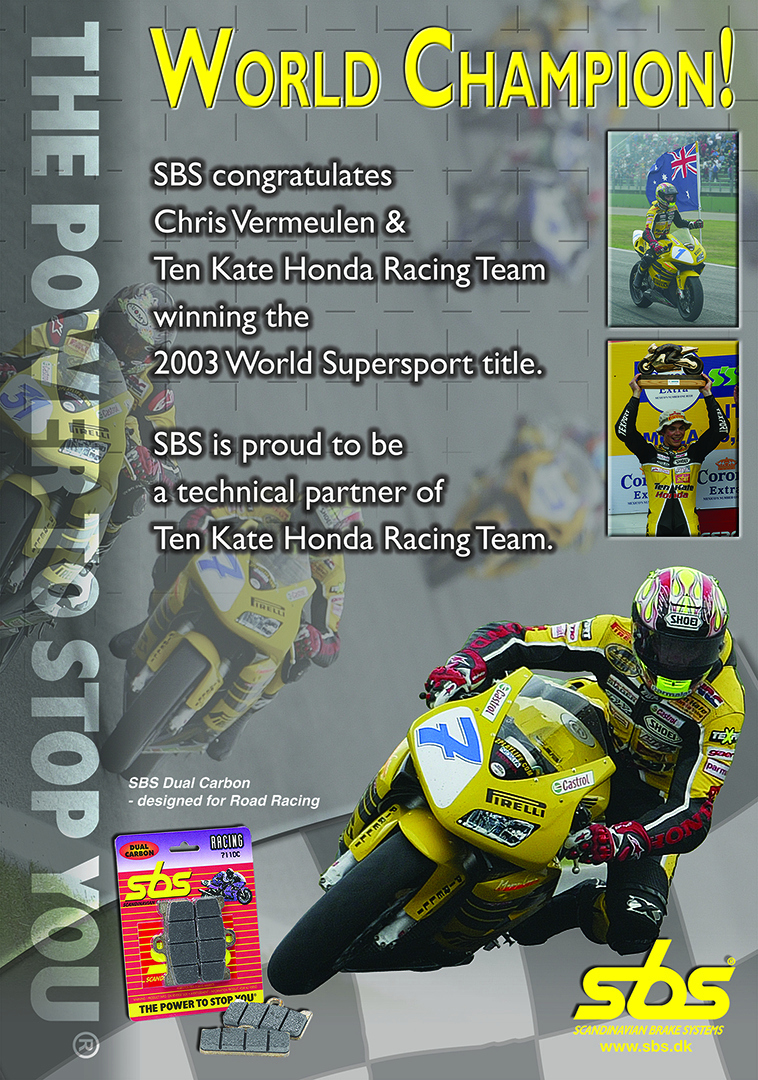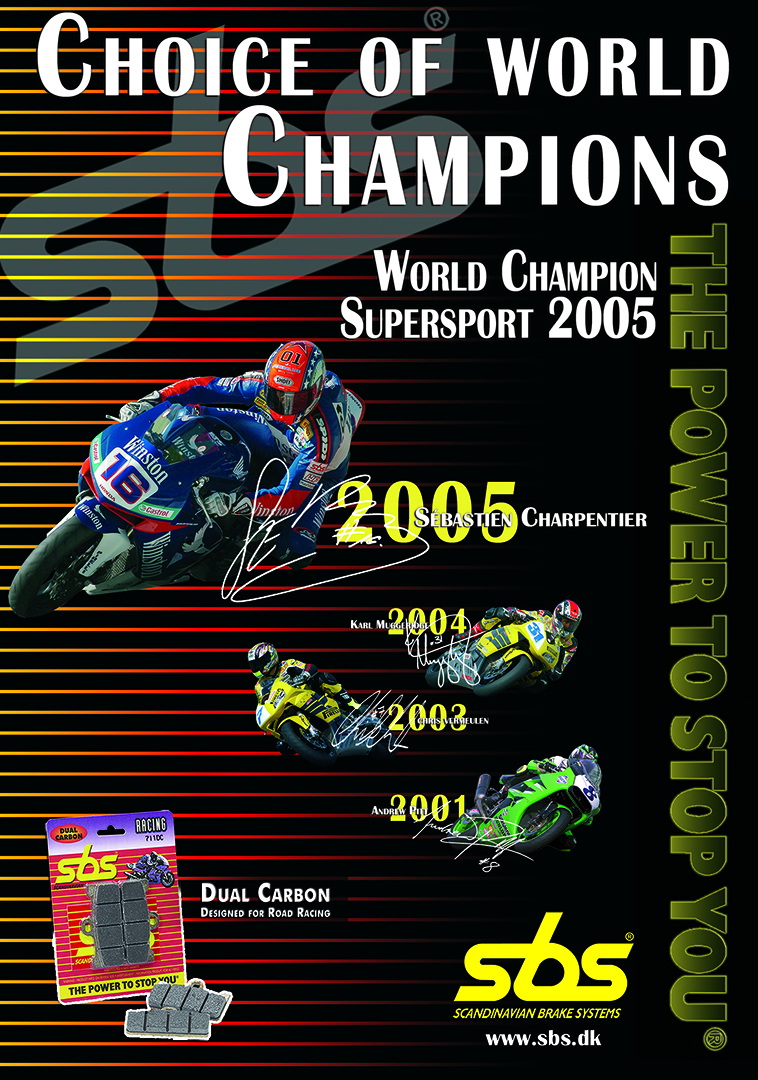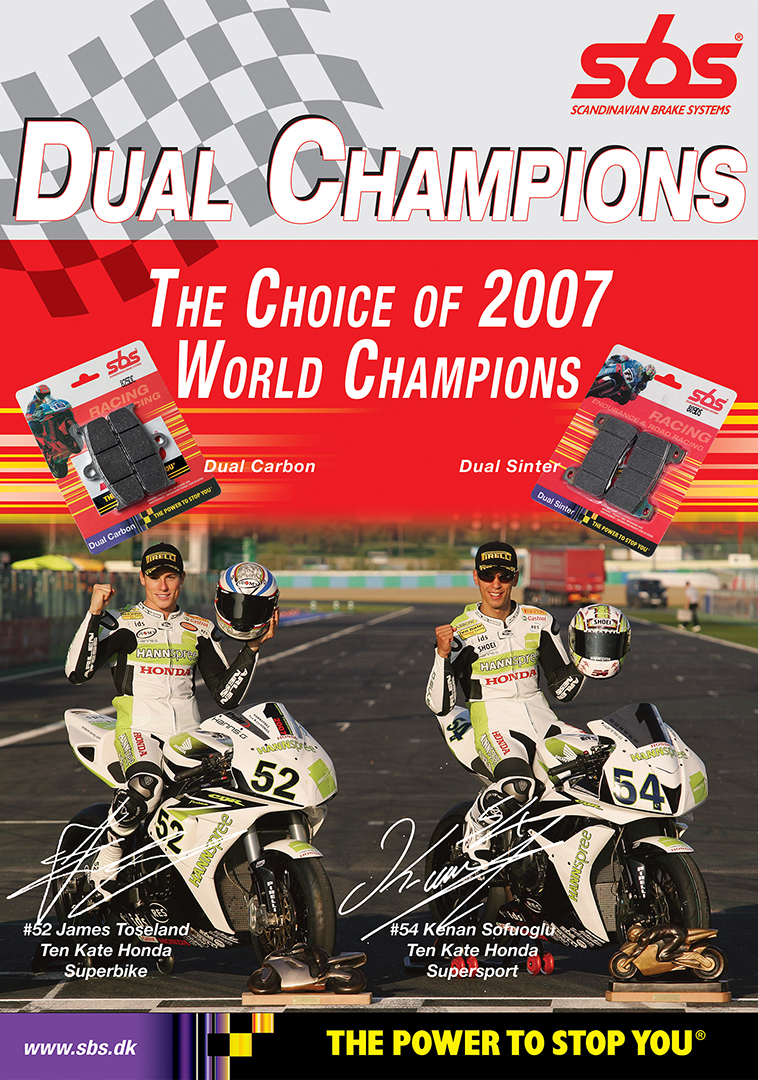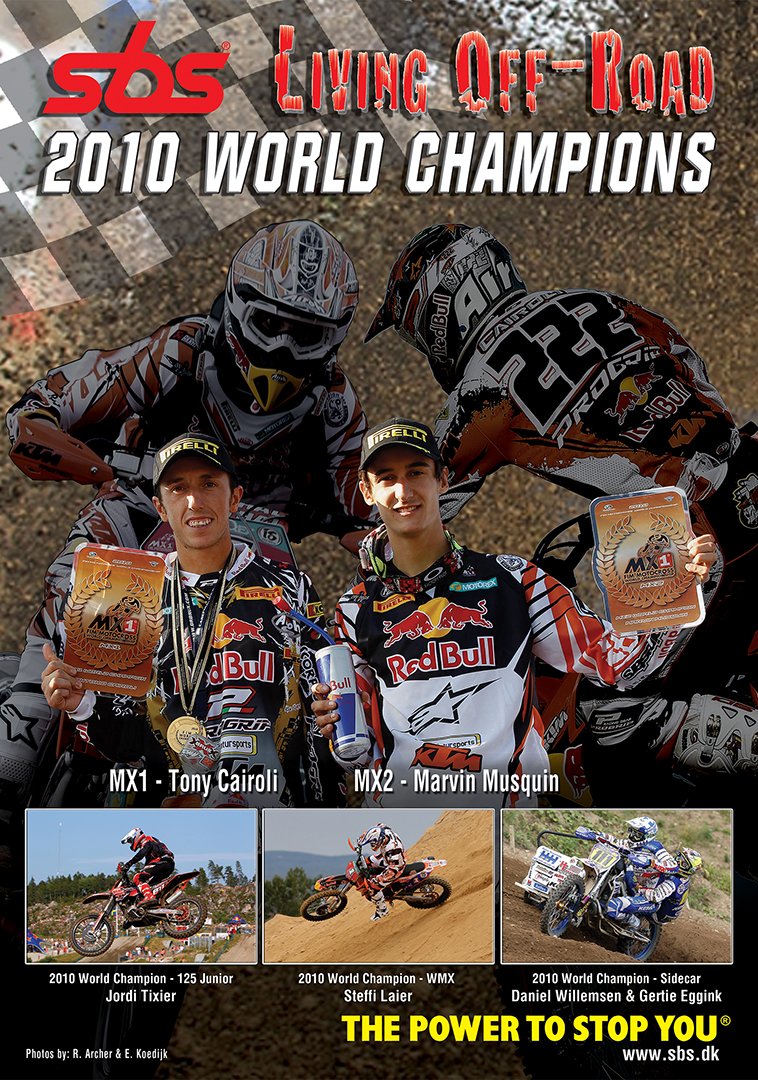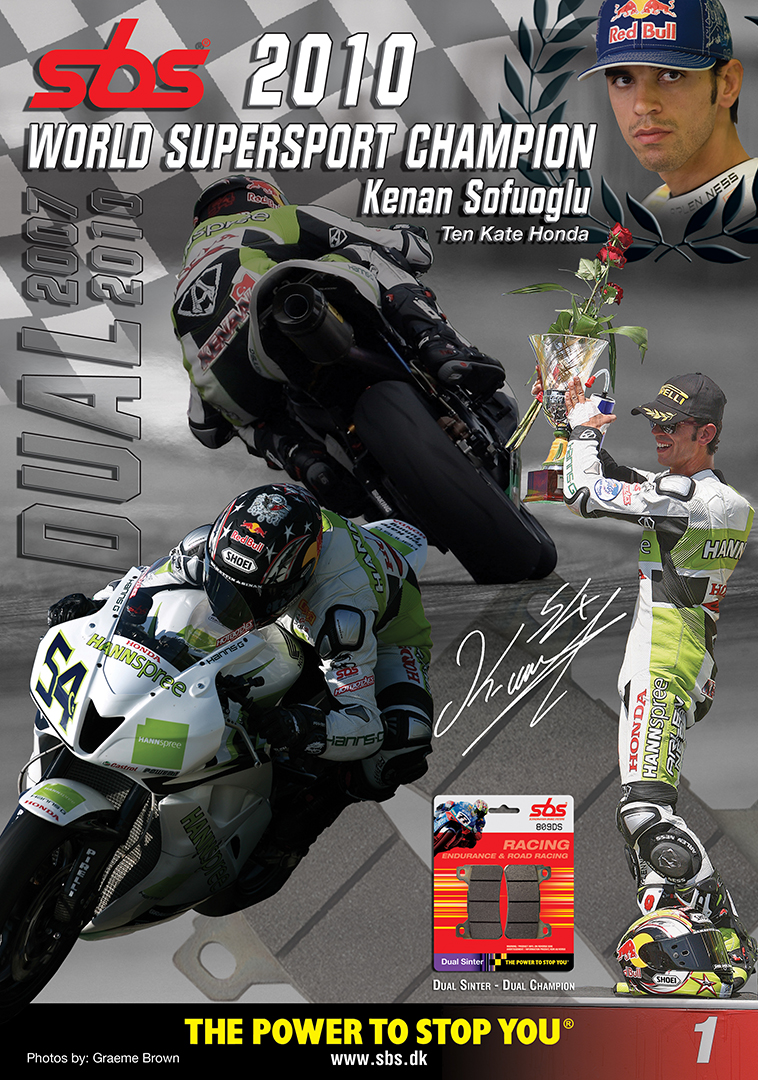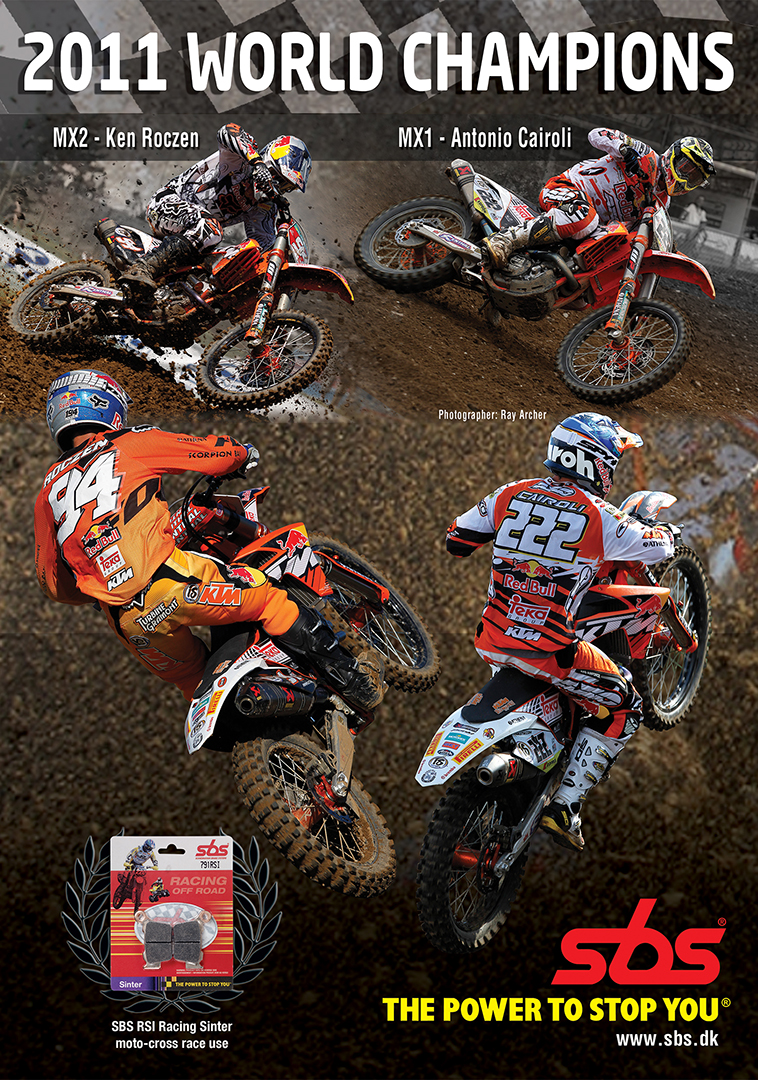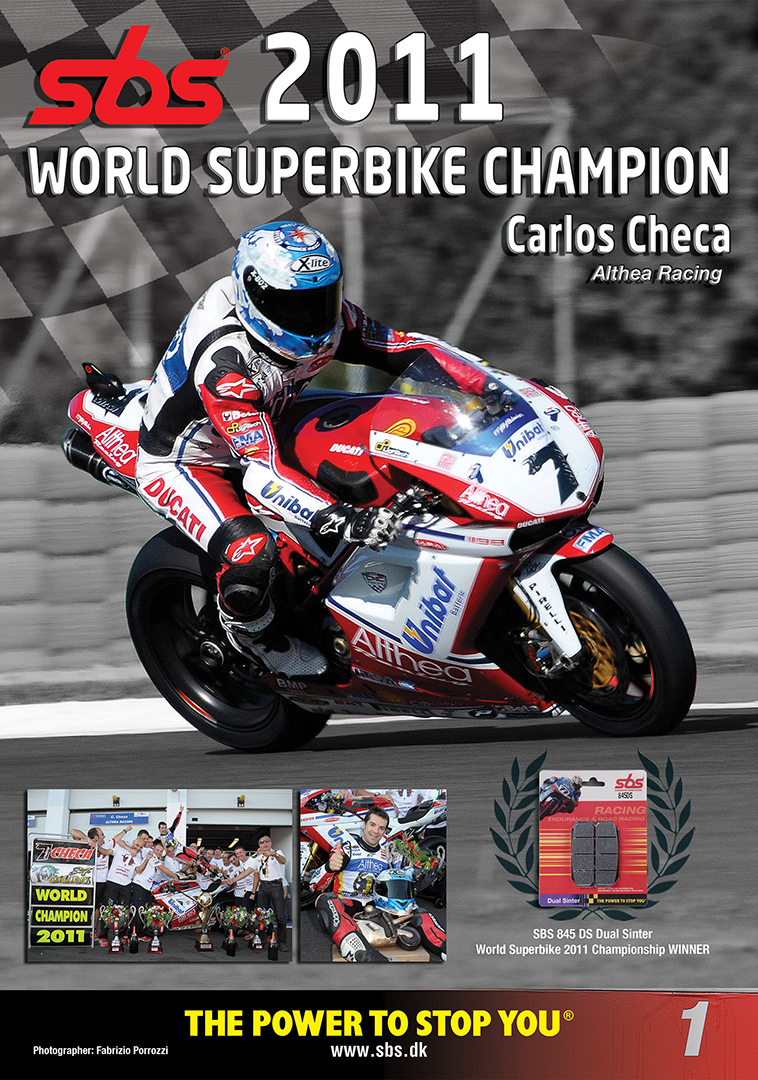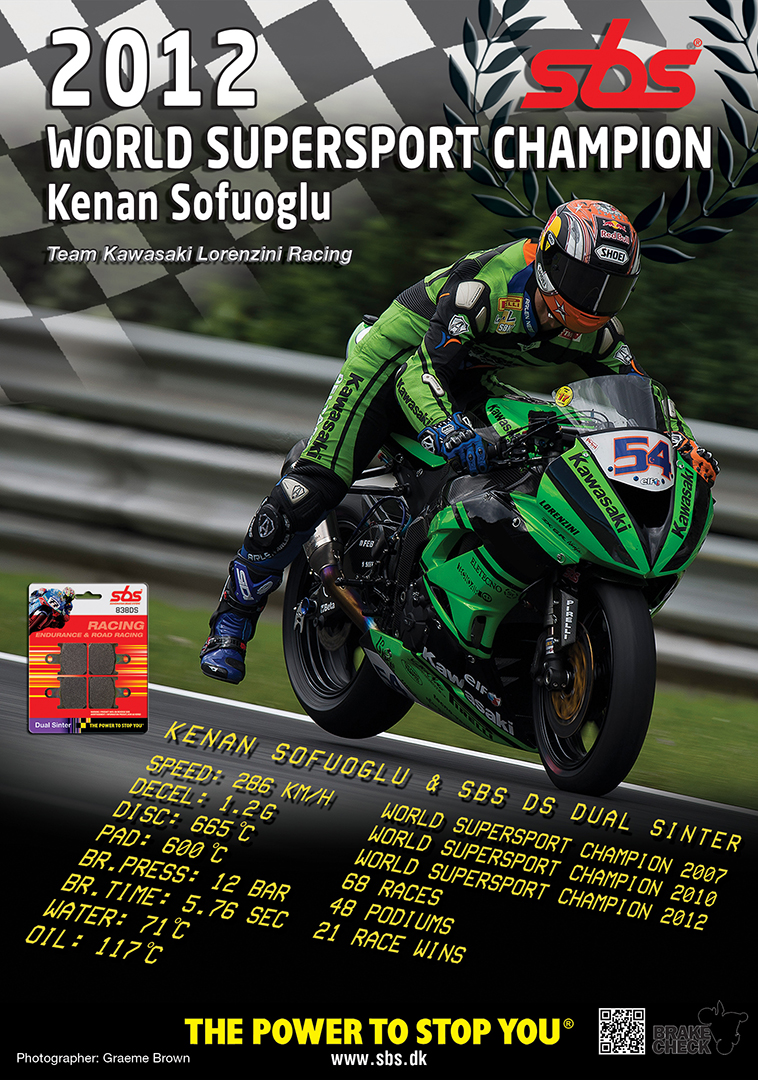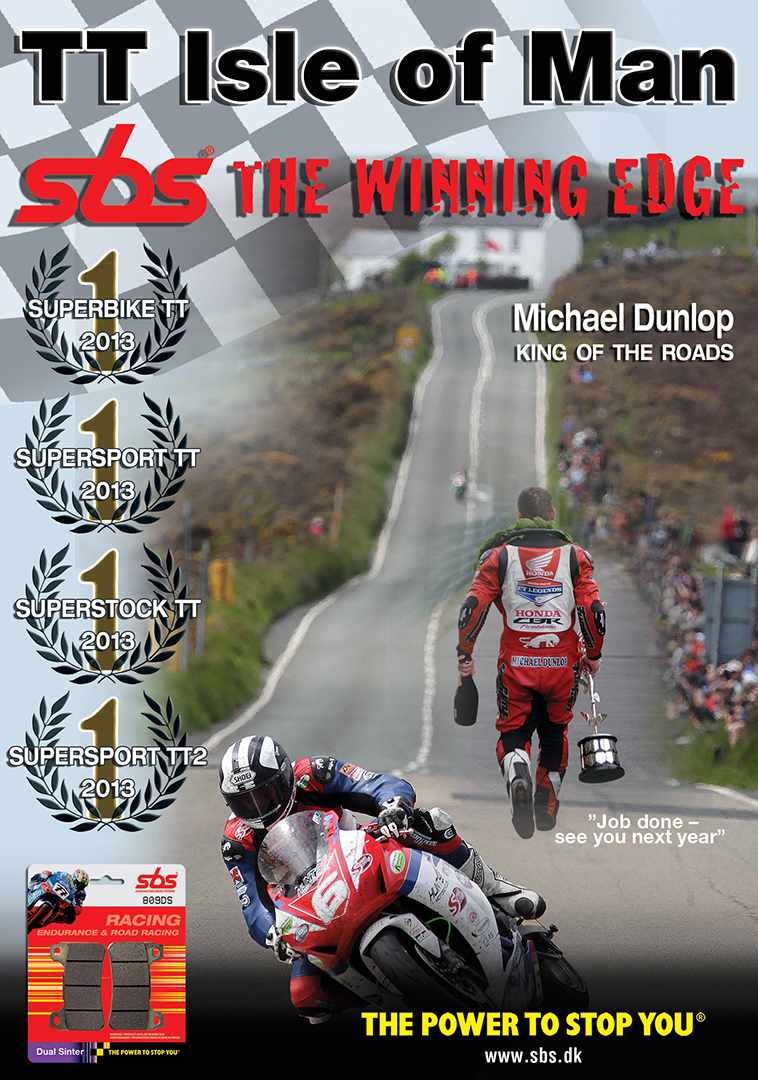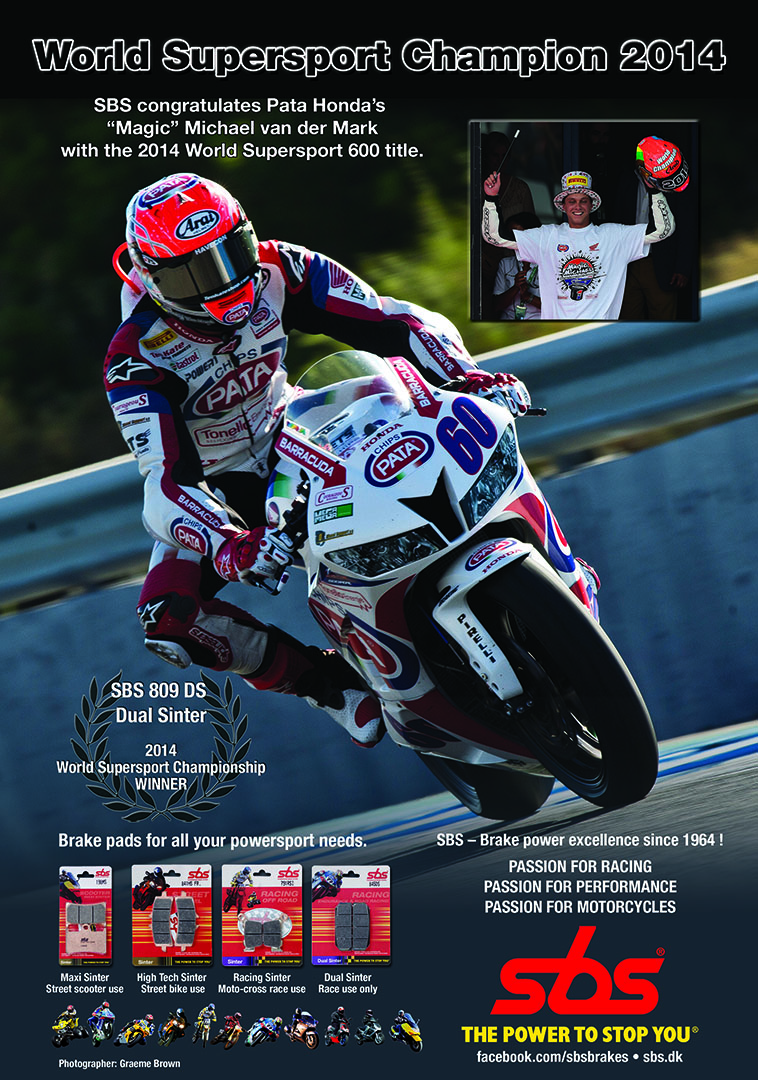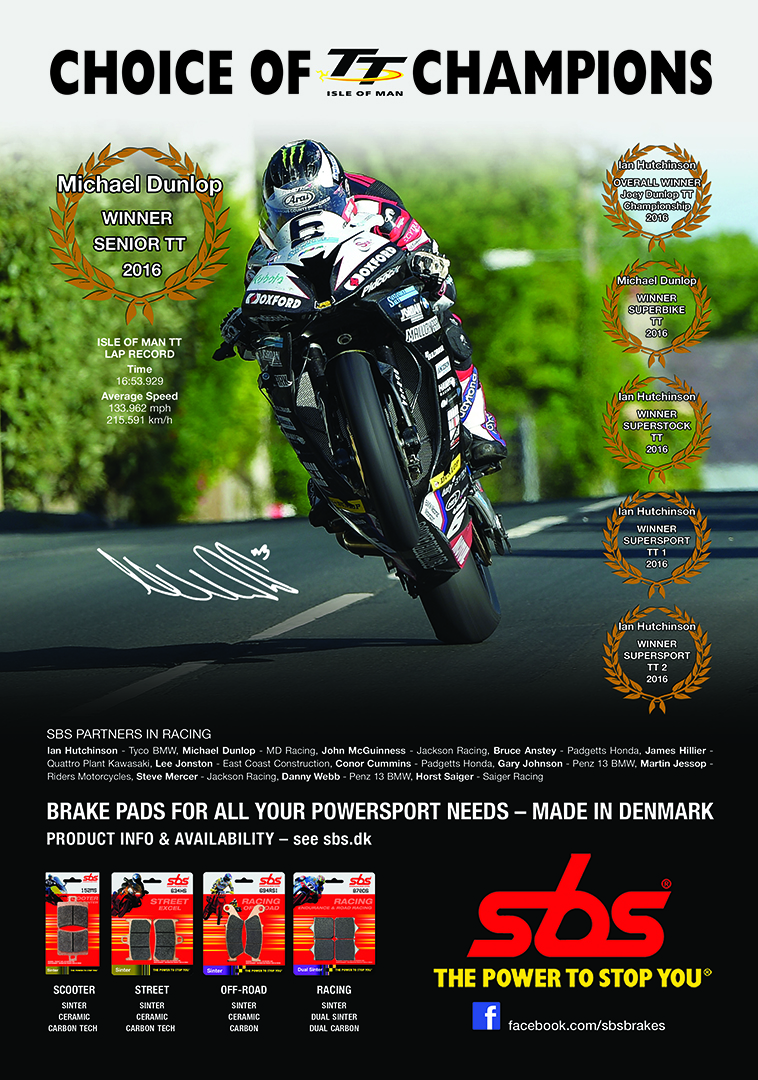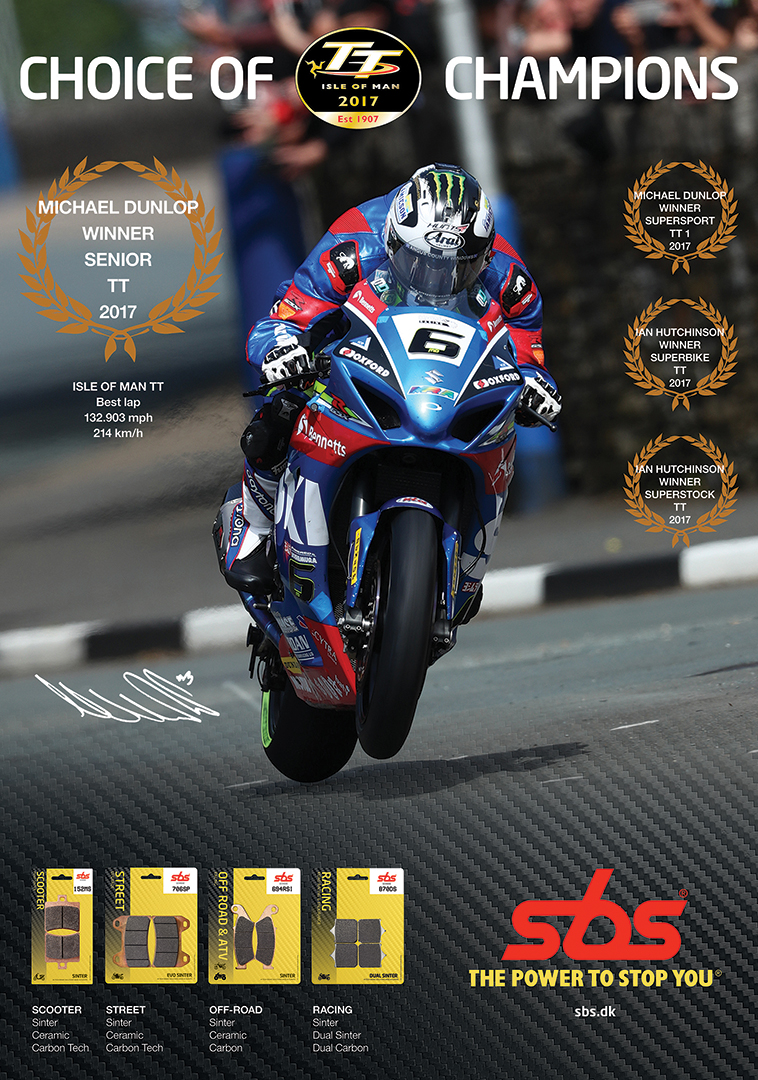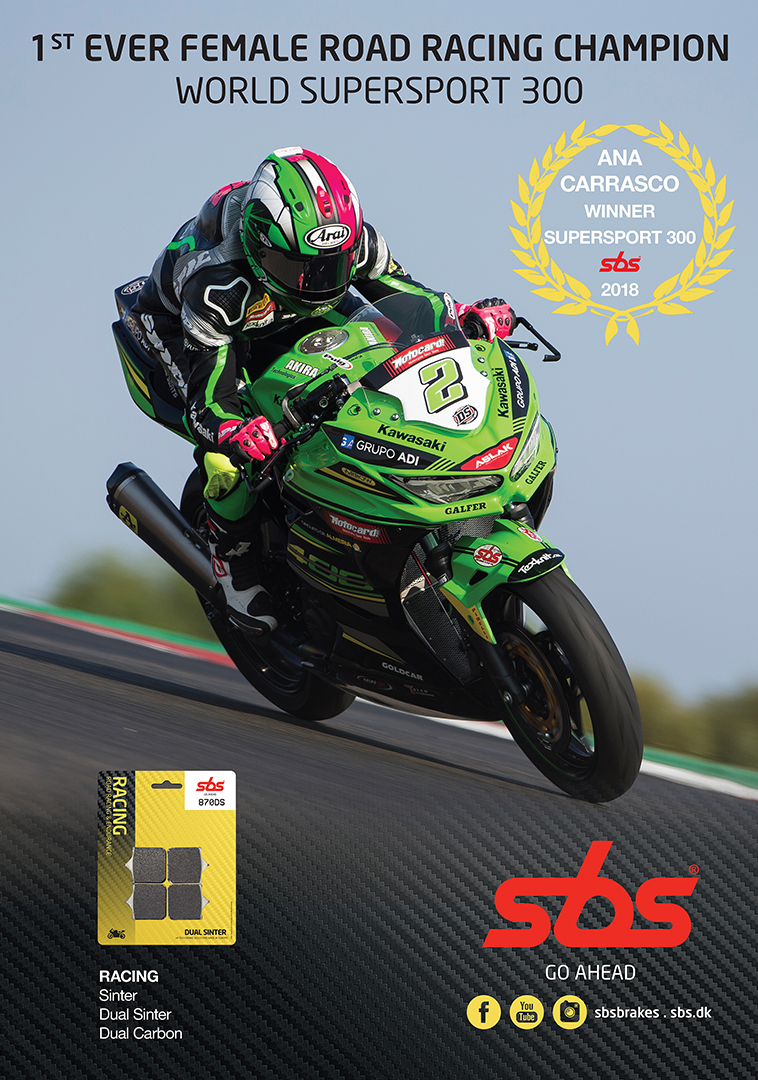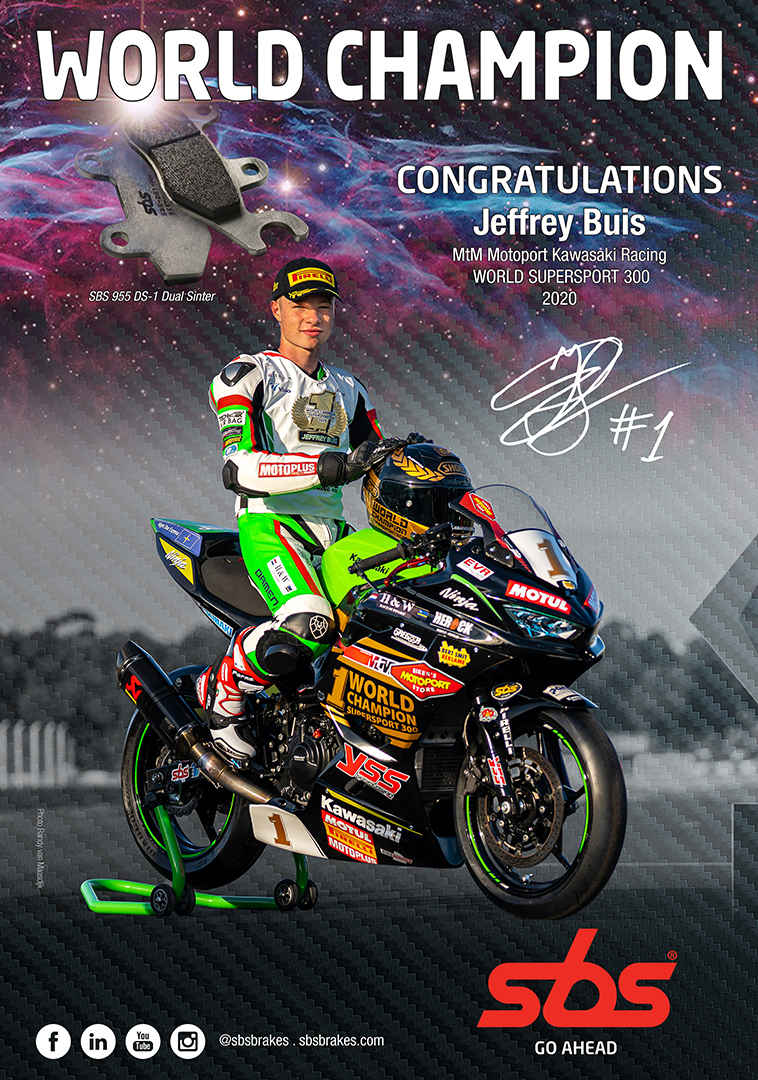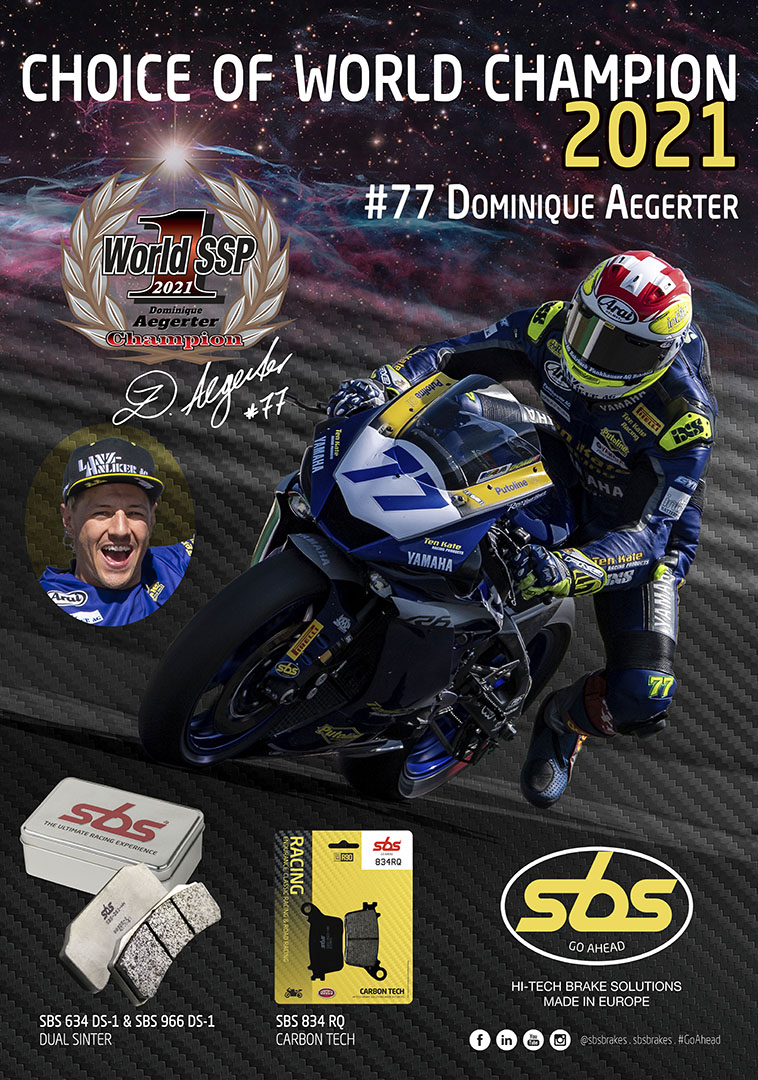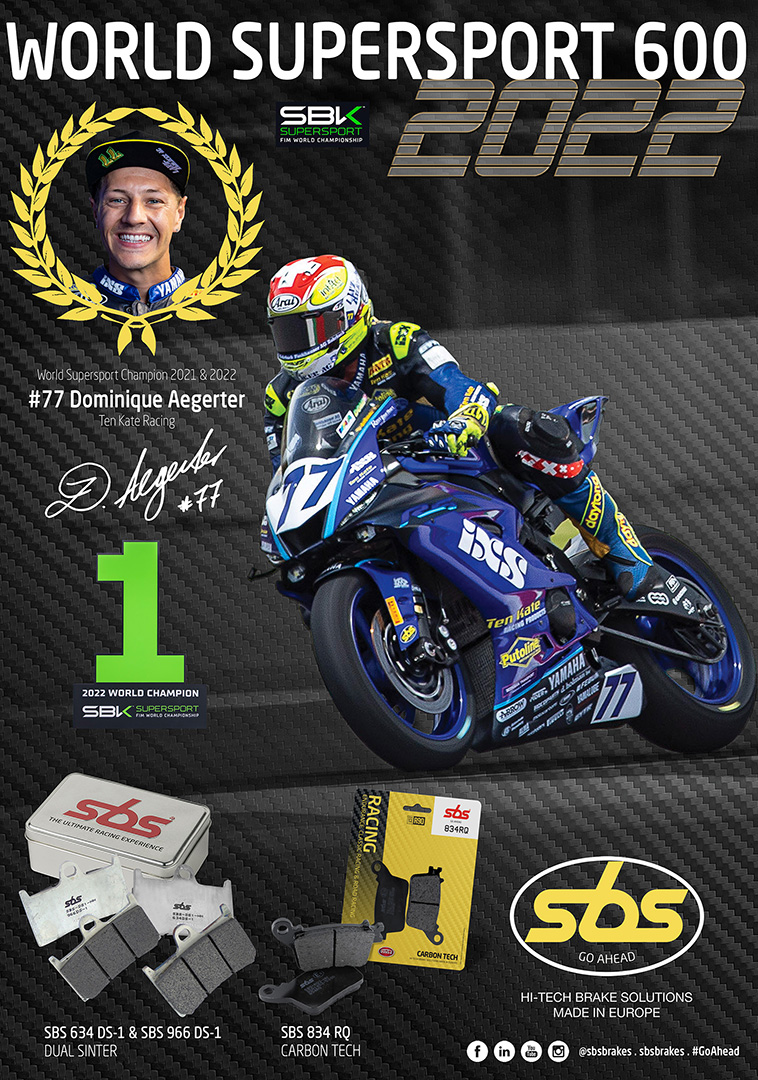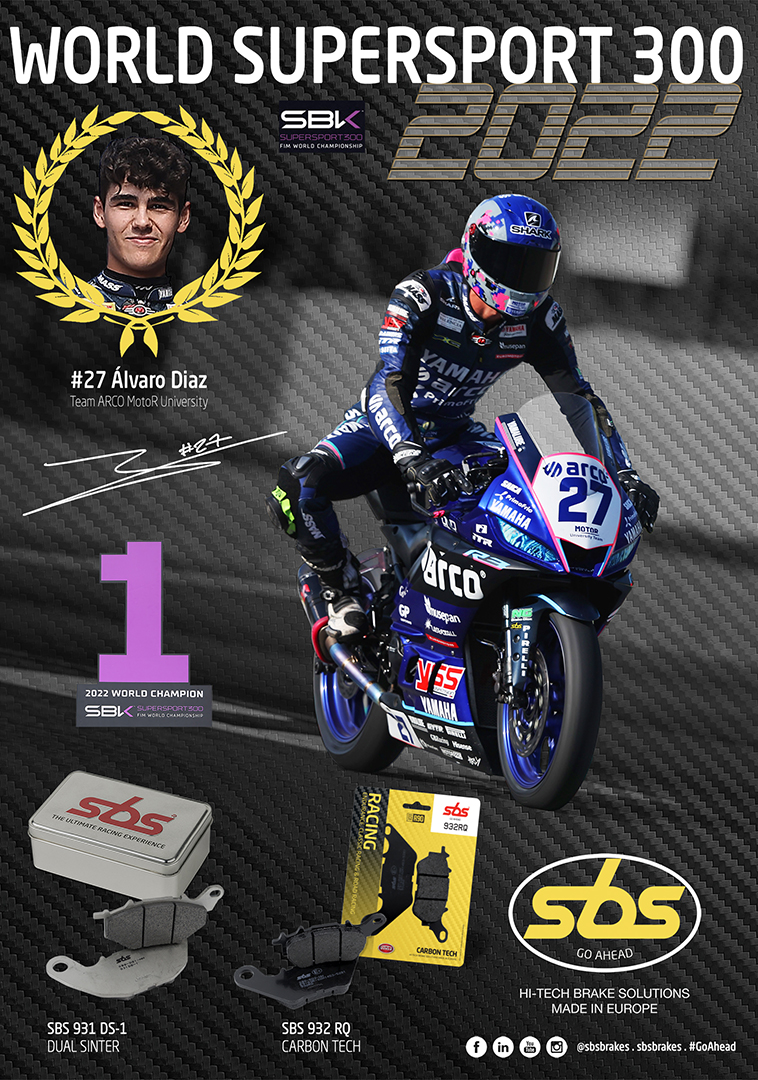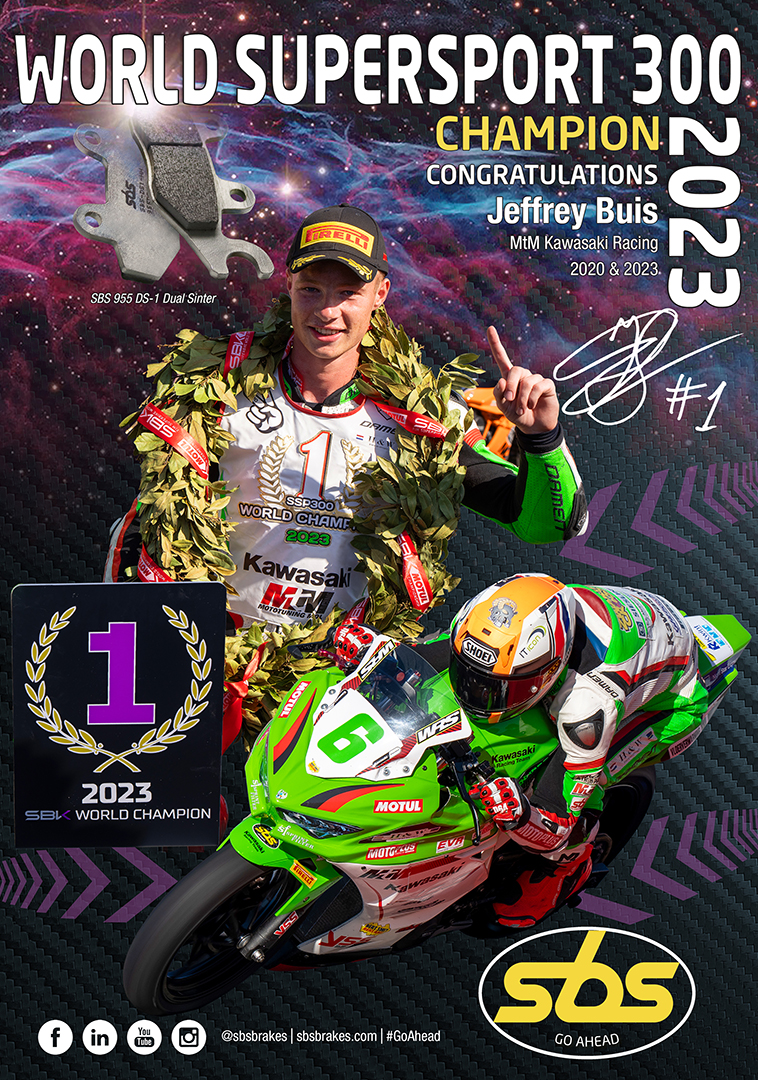
CHOICE OF CHAMPIONS SINCE 2001

In the 80s with ceramic-based brake pads
SBS RACING HISTORY
SBS racing history started back in the 80s with ceramic-based brake pads that were developed and complemented with sinter brake pads in the 90’s in collaboration with Factory teams such as Yoshimura Suzuki, Ferracci Ducati, Muzzy Kawasaki, Erion Honda and first World Superbike Champion Fred Merkel and Team Rumi Honda.
In the mid-90s, SBS Racing Service became involved in the World Superbike series where the SBS RS Racing Sinter compound was developed in close cooperation between SBS R&D department and the top teams in the Championship.
In 2001, the first DC Dual Carbon version was launched after 5 years of intensive development and testing work.
After several World Champion titles with DC Dual Carbon, the first DS Dual Sinter version was introduced in 2007 after another 5 years of development and testing work.
CHOICE OF CHAMPIONS
2023
Mads Fredsøe • Richard Cooper • Tommy Bridewell •
Sara Andersen • August Kroon • Emiliano Ercolani •
Markus Reiterberger • Kenny Foray • Wayne Tessels •
Michael Dunlop • Peter Hickman • Tyler O´Hara •
Jeremy McWilliams • Blake Davis • Simon Vilhelmsen •
Courtney Duncan • Senna Agius • Jeffrey Buis •
Tom Booth-Amos
SBS DEVELOPMENT OF RACING COMPOUNDS
Higher demands for brake pad performance
DC DUAL CARBON FRONT BRAKE PADS
The DC Dual Carbon and DS Dual Sinter performance has continuously been improved in line with the introduction of new high tech bikes for road racing.
In particular, the Superstock 1000 class with standard braking system made higher demands for brake pad performance simultaneously with the development of engine performance, tire compounds, suspension components and not least electronic riding aids such as traction, wheelie, slide-control, engine-brake, ABS, etc. With these electronic riding aids, lap times became faster and faster, even for hobby and trackday riders.
SBS DC Dual Carbon and DS Dual Sinter have since the turn of the millennium enjoyed great popularity among top-level teams and riders in World Superbike, Moto 2 & 3 GP, World Endurance and TT road racing and for riders in National Championships and Track-day enthusiasts.
After several World Champion titles in collaboration with SBS ‘Partners in Racing’ teams, first with DC Dual Carbon and later followed by DS Dual Sinter, SBS has launched for the 2019 season the DS-2 compound to complement the well-known DS Dual Sinter compound.
DC Dual Carbon (Green)
- Smooth initial bite
- Controlable and increasing in-stop performance & brake feel
DS-1 Dual Sinter (Blue)
- Strong initial bite
- Linear in-stop performance & brake feel
DS-2 Dual Sinter (Red)
- Smooth initial bite
- Progressive in-stop performance & brake feel


Ana Carrasco
TEAM KAWASAKI PROVEC RACING
“1st FEMALE World Champion ever”
DC DUAL CARBON FEED-BACK FROM SBS “PARTNERS IN RACING”
The SBS DC Dual Carbon is preferred by many riders due to it’s very smooth initial bite and increasing in-stop performance & feel.
World Champions with DC
Andrew Pitt, Chris Vermeulen, Karl Muggeridge & Sebastien Charpentier.
World Superbike/Supersport Championship
Double World Champion in World Supersport 600 Sebastien Charpentier from Ten Kate Honda, swore to DC Dual Carbon, but always tried to improve his braking style by testing SBS DS Dual Sinter, but always returned to DC Dual Carbon when DS Dual Sinter proved too aggressive for him. Sebastien’s results speak for them-selves.
Ana Carrasco – World Champion
In 2018, Ana Carrasco became the first female World Champion ever in road racing at Kawasaki Provec’s Kawasaki 400 Ninja in the World Supersport 300 class, with SBS 955 DC Dual Carbon.
Ana Carrasco has also tested DS-2 Dual Sinter, but prefers SBS DC Dual Carbon’s soft and progressive braking performance to her very smooth riding style, which led Ana to her amazing results in 2018 and again in 2019.
FOR RACE USE ONLY
The upgrade choice for Superbike, Supersport and Superstock racers in National Championship as well as for Track Day riders
- High-tech carbon compound developed for racing and standard brake systems used for race and sport bikes
- Low heat transfer rate protects brake system and brake fluid against extreme temperatures
- Smooth initial bite, progressive in-stop performance with excellent brake lever feel and modulation
- DEST technology used for pre-bedding of the compound to eliminate fade and secure consistent performance
- NUCAP NRS technology secures a mechanical and indestructible bonding of the compound


DC DUAL CARBON BEDDING-IN PROCEDURE
When changing for SBS-DC from using another type of brake pad material - Follow this Bedding-in procedure very carefully:
- Remove existing friction material deposit from brake discs - using eg. emery paper#150.
- Do a series of gentle brakings until pad-surface is in full contact with discsurface.
- After pad/disc contact is achieved - repeated short brakings building up heat i discs and pads until a very thin and uniform dull/black/darkblue layer of friction material (transfer film) is established on the brake disc.
- Then a period to allow discs to cool again before proper use.
- Then a few easy laps building up heat - ready for race use.
When bedding-in procedure IS needed
Always follow the above bedding-in procedure - when changing for SBS-DC for the first time OR when using new brake discs.
When bedding-in procedure is NOT needed
When brake discs are covered by SBS-DC friction material (transferfilm) - new pads only need about one/two laps to be in full contact with disc-surface - then the pads are race ready (Thermal bedding-in as described above in point 1. - 4. is not needed)
Cleaning of brake discs - NOT when using SBS-DC
When brake discs are covered by SBS-DC friction material (transfer film) - Do not clean/sand/grind the brake discs after each session.
DS-1 DUAL SINTER FRONT BRAKE PADS
FOR RACE USE ONLY
- The choice of numerous World Champions in Superbike, Supersport, Moto2 and Endurance
- High-tech sintered compound available for racing & standard brake systems used in racing
- Strong initial bite
- Linear in-stop performance & brake feel
- A combination (left and right) of DS-1 & DS-2 com-pounds makes fine tuning of braking performance possible, see more page 11 in section “DRC - Dynamic Racing Concept”
- NUCAP NRS technology secures mechanical bonding


Carlos Checa
WORLD SUPERBIKE CHAMPION
DS-1 DUAL SINTER FEED-BACK FROM SBS “PARTNERS IN RACING”
The SBS DS-1 is preferred by many riders due to its sharp initial bite and linear brake feel.
World Champions with DS-1
Troy Corser, James Toseland, 5-time WSSP Champion Kenan Sofuoglu, Andrew Pitt, Carlos Checa & Michael van der Mark
World Superbike/Supersport Championship
At Kenan Sofuoglu’s first titles in World Supersport, powerful initial bite was everything in relation to his riding style. Later, Kenan was involved in the development and testing of the DS-2 as his riding and braking style changed with the change from Honda to Kawasaki.
In the smaller capacity classes, Scott Deroue former teammate with Ana Carrasco in the MotoGP class Moto3 was very close in the battle for the World Supersport 300 title in 2018 and 2019. Scott is the type of rider who changes for new brake pads before a race, to achieve the absolute sharpest initial bite in the first laps of the race. Scott Deroue obviously prefers the SBS DS-1 to his Kawasaki.
MotoGP Championship
In the smallest capacity class Moto3 World Champion runner up Aron Canet riding his Team MAX Sterilgarda KTM Moto3 is also a big fan of DS-1´s aggressive initial bite and linear & controllable in-stop brake power – when winning Moto3 races!
TT Road Racing
DS-1’s powerful and precise initial bite has over the years made DS-1 the most preferred compound among most TT road racing teams and riders at the Isle of Man TT and North West 200 races. The victories and riders of TT road racing speak for themselves: John McGuinness, Ian Hutchinson, Michael Dunlop, Dean Harrison, Bruce Anstey, Lee Johnston, Ian Lougher, Conor Cummins and many more.
DS-1 DUAL SINTER BEDDING-IN PROCEDURE
- If the brake discs have severe deposit from other brake pad materials than SBS DS-1 or DS-2, remove this friction material from the brake disc surface using for instance emery paper #150 or a special diamond file tool.
- The new brake pads only need about one two laps of gentle brakings until the pad surface is in full contact with the disc surface.
- When full contact between disc and pad surface is obtained, the pads are ready to race.
DS-2 DUAL SINTER FRONT BRAKE PADS

FOR RACE USE ONLY
- The choice of numerous World Champions in Superbike, Supersport, Moto2 and Endurance
- High-tech sintered compound available for racing & standard brake systems used in racing
- Smooth initial bite
- Progressive in-stop performance & brake feel
- A combination (left and right) of DS-1 & DS-2 com-pounds makes fine tuning of braking performance possible, see more page 11 in section “DRC - Dynamic Racing Concept”
- NUCAP NRS technology secures mechanical bonding

Kenan Sofuoglu
5-TIMES WORLD CHAMPION SUPERSPORT
DS-2 DUAL SINTER FEED-BACK FROM SBS “PARTNERS IN RACING”
SBS DS-2 is the newest dedicated racing compound from SBS and was introduced entering into the 2019 season. DS-2 is preferred by many riders braking very late and with high pressure not to have a too aggressive initial bite, while at the same time having a good feel and strong build-up of braking power during the stop.
World Champions with DS-2
Kenan Sofuoglu became World Supersport Champion twice with DS-2 during the final development and tests of the compound and most recently young Manuel González became World Supersport 300 Champion, now a regular contender in Moto2 Championship.
World Superbike/Supersport Championship
World Champion Manuel González started the 2019 winter test season with DS-1, but couldn’t really get familiar with the initial bite which did interfer with his bike set-up too much for his riding style. He also wanted more braking power and feel while braking deep into the turns. After testing the DS-2 on his Ninja 400, brake performance was exactly as it should be according to “Manu” - his 2019 championship speaks for itself!
MotoGP Championship
Moto2 team Intact Dynavolt´s previous top rider Tom Lüthi has been an important factor and test rider in the development of the DS-2. Top priority for him has been controllable braking performance from initial bite in start of braking to end of braking deep inside the corner. Tom used DS-2 Dual Sinter at the very top of the Moto2 championship on his Triumph 765 powered Kalex Moto2 racer.
World Endurance Championship
Throughout the compound test period and the debut season and the years following, DS-2 has also received great popularity among World Endurance teams, with BMW’s Factory Team finishing on the podium at the 2020 season’s first 24-hour race at Bol dÓr with the BMW S1000RR, while also ended 2021 season as vice champions with the all new BMW M1000RR, always equipped with SBS DS-2 Dual Sinter.
DS-2 DUAL SINTER BEDDING-IN PROCEDURE
- If the brake discs have severe deposit from other brake pad materials than SBS DS-1 or DS-2, remove this friction material from the brake disc surface using for instance emery paper #150 or a special diamond file tool.
- The new brake pads only need about one two laps of gentle brakings until the pad surface is in full contact with the disc surface.
- When full contact between disc and pad surface is obtained, the pads are ready to race.
RQ AND LS REAR BRAKE PADS
RQ - CARBON TECH

- Rear brake carbon compound with high brake performance
- Excellent feel and control to use rear brake steering into turns and handle the bike out of turns
LS - SINTER

- Rear brake sintered compound with medium brake performance and long pad life
- Recommended for riders using the rear brake occasionally or only slightly entering the turns
100% NRS SAFE – NUCAP RETENTION SYSTEM
Also as the only manufacturer of racing pads, SBS has since the introduction of DC Dual Carbon in 2001 and DS Dual Sinter in 2007 used NRS technology for both the carbon and the sinter based compounds.
NRS Nucap Retension System is an advanced mechanical friction material bonding technology based on a matrix of steel hooks raised from the backing plate steel material. The NRS hooks mold into the friction material creating an indestructible and corrosion safe mechanical bond without any use of adhesives.

DEST – DYNAMIC ENERGY SURFACE TREATMENT

DC Dual Carbon racing brake pads are DEST treated to ensure consistent fade-free performance when leaving from SBS production line. No thermal bedding-in is needed on the bike due to the
DEST process which ensures degassing of the carbon based compound to eliminate a gaseous film being created between disc and pad surface to occur loss of brake power (fade).

